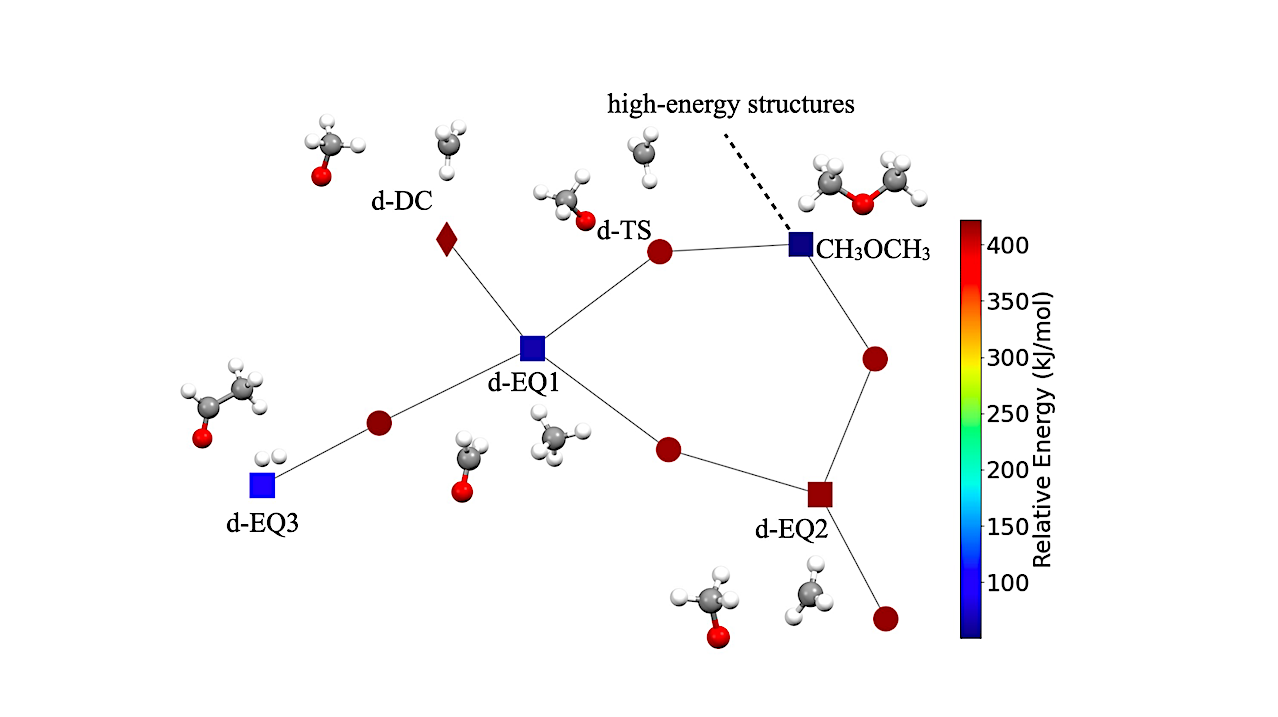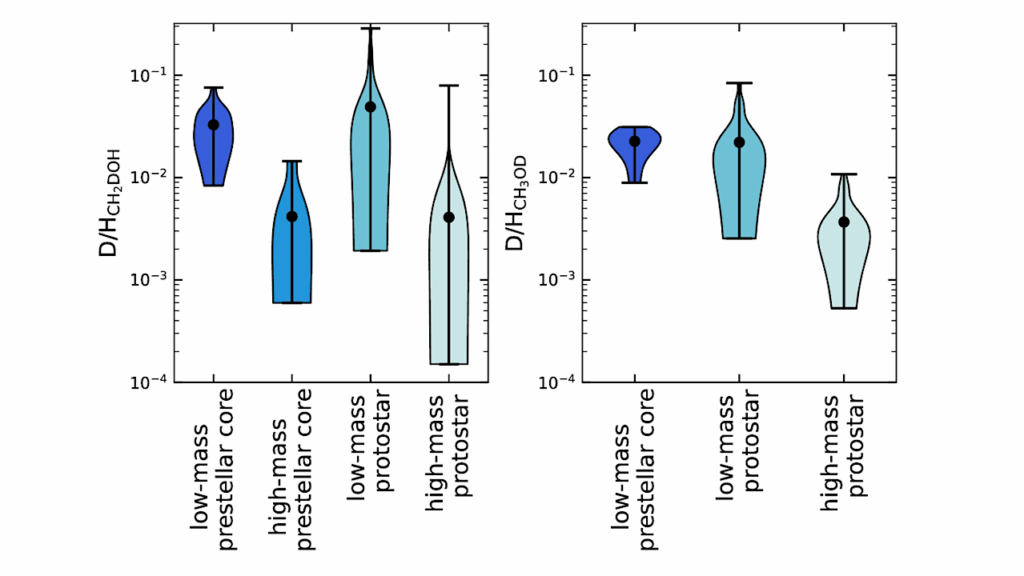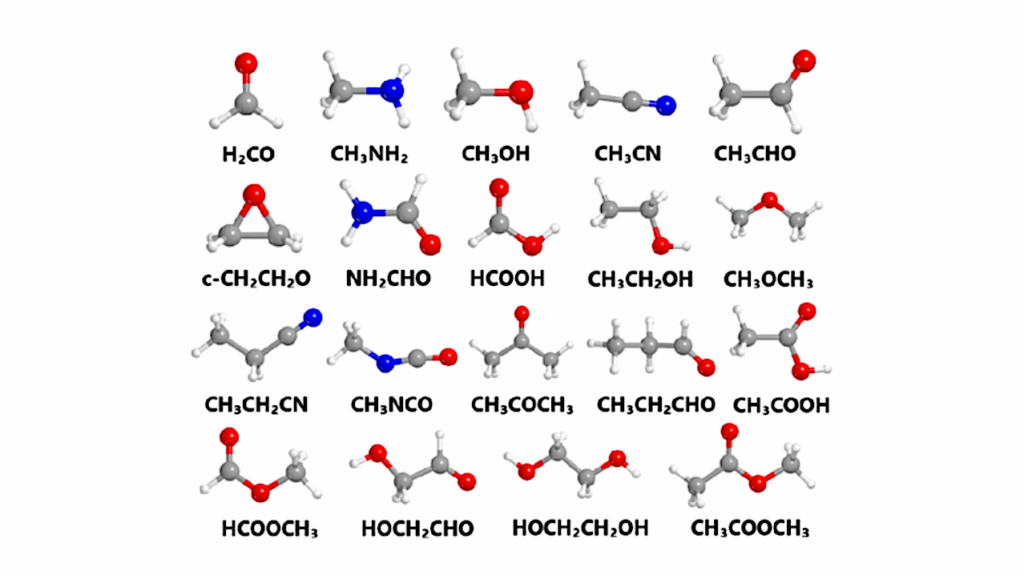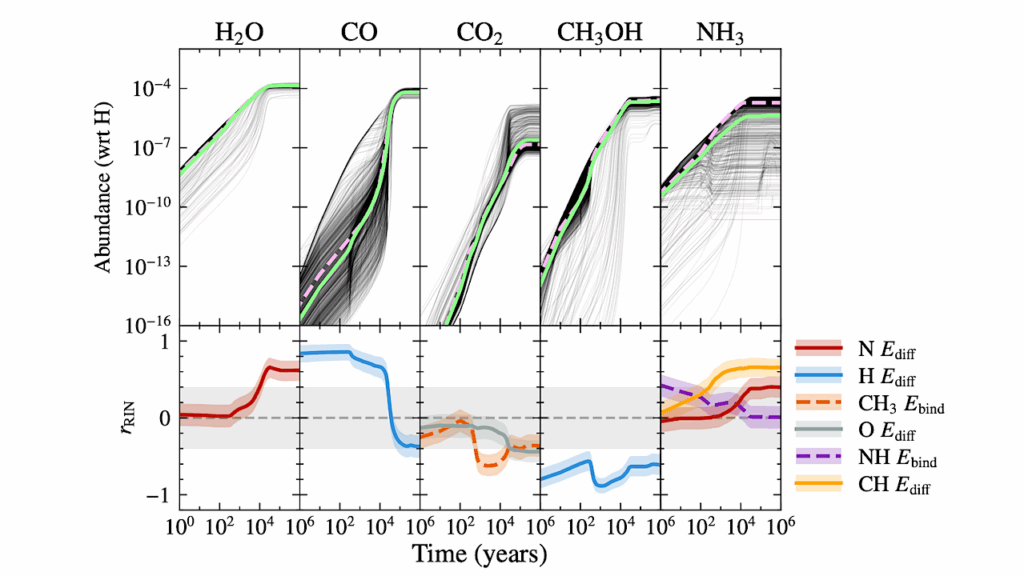The Automated Reaction-Pathway Search reveals the Energetically Favorable Synthesis of Interstellar CH3OCH3 and HCOOCH3

Recent astronomical observations have shown that interstellar complex organic molecules (COMs) exist even in cold environments (∼10 K), while various interstellar COMs have conventionally been detected in the hot gas (≳ 100 K) in the vicinity of high-mass and low-mass protostars.
However, the formation pathway of each interstellar COM remains largely unclear. In this work, we demonstrate that an automated reaction path search based on transition state theory, which does not require predetermined pathways, is helpful for investigating the formation pathways of interstellar COMs in the gas phase. The exhaustive search within electronic ground states helps elucidate the complex chemical formation pathways of COMs at low temperatures.
Here we examine the formation pathways of dimethyl ether (CH3OCH3) and methyl formate (HCOOCH3), which are often detected in the cold and hot gas of star-forming regions. We have identified a barrierless and exothermic formation path of CH3OCH3 by reaction between neutral species; CH3O + CH3 → H2CO ⋯ CH4 → CH3OCH3 is the most efficient path in the large chemical network constructed by our automated reaction path search and is comparable with previous studies.
For HCOOCH3, we obtain complex pathways initiated from reactions between neutral species; HCOO and CH3 generate HCOOCH3 and its isomers without external energy. However, we also identified the competing reaction branches producing CO2 + CH4 and CH3COOH, which would be more efficient than the formation of HCOOCH3. Then the gas-phase formation of HCOOCH3 through reactions between neutral species would not be efficient compared to the CH3OCH3 formation.
Yu Komatsu, Kenji Furuya
Comments: Accepted in ACS Earth Space Chem. (22 pages, 7 figures)
Subjects: Astrophysics of Galaxies (astro-ph.GA); Earth and Planetary Astrophysics (astro-ph.EP); Chemical Physics (physics.chem-ph)
Cite as: arXiv:2308.05273 [astro-ph.GA] (or arXiv:2308.05273v1 [astro-ph.GA] for this version)
Submission history
From: Yu Komatsu
[v1] Thu, 10 Aug 2023 01:24:15 UTC (3,158 KB)
https://arxiv.org/abs/2308.05273
Astrobiology, Astrochemistry,








